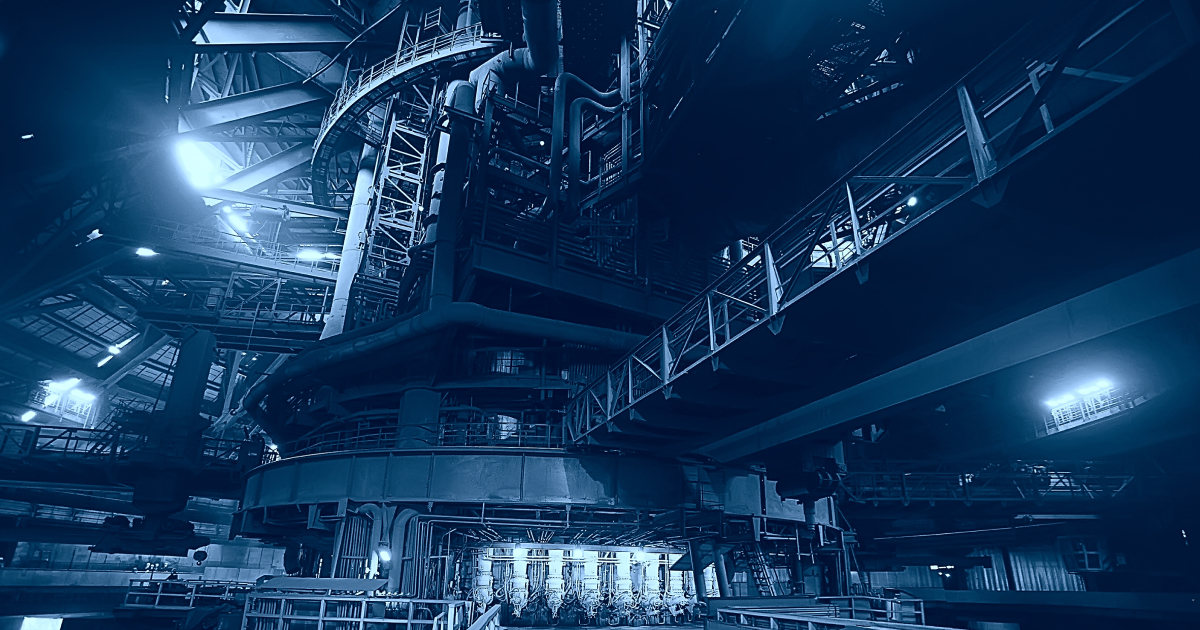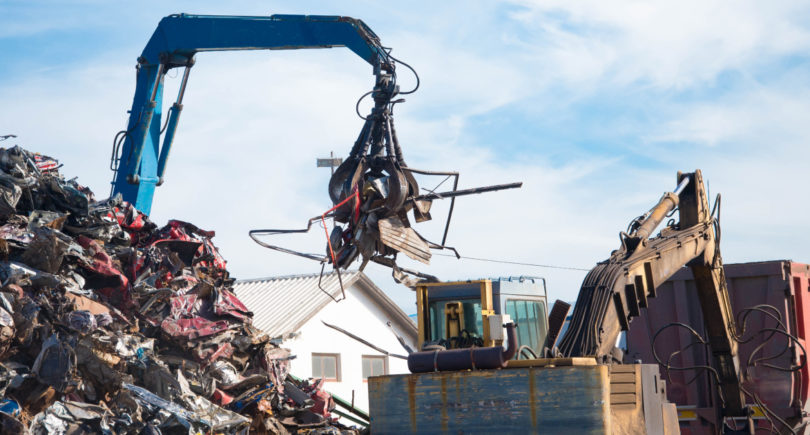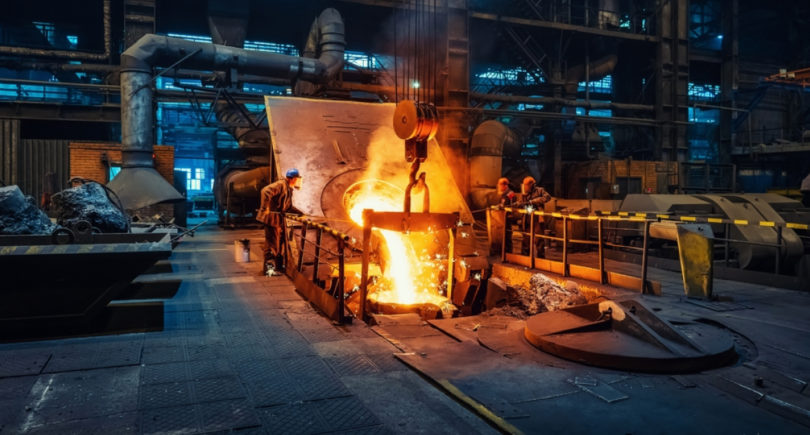
The mining & metals sector of Ukraine will be loss-making in 2019 in terms of key indicators
In 2019, the Ukrainian mining & metals sector fully felt all the problems associated with the negative impacts of growing protectionism around the globe and the instability of the global environment. Though the trouble came from where nobody had expected, as the revaluation of the national currency in the beginning of the year was little predicted.
Based on preliminary estimates by Ukrmetallurgprom, production of main types of products will decrease at 2019 year-end:
- steel — down to 20.5 million tons (-2.8% against 2018);
- pig iron — down to 20 million tons (-2.7%);
- rolled products — down to 18 million tons (-2%).
“This is the worst performance of all years of Ukraine’s independence. For comparison, 21.3 million tons and 21.1 million tons of steel were produced in 2017 and in 2018 respectively,” say Ukrmetallurgprom analysts.
The above figures are almost identical to the industrial production data of the State Statistics Service. Hence, over 11 months, production of steel and finished metal products fell by 2.5% (by 8.3% in November). Conversely, in iron ore mining, a 0.9% increase was recorded in January–November, but a 5.6% decrease in the last month of this period.
Production projections were adjusted downward throughout 2019. Specifically, in May, according to the production results of January–April 2019, Ukraine’s Ministry of Economic Development expected a 7% growth in steel production at the year-end, up to 22.64 million tons. In August, the forecast based on the January–July results became more pessimistic, with steel production growth projected at only 4%, up to 21.9 million tons.
The losses of 2019
According to GMK Center’s estimates, in 2019, the mining & metals sector of Ukraine lost profits worth $2.8 billion due to negative internal and external factors. Over 11 months of 2019, revenue from exports of ferrous metals alone dropped by 10.5% to $8.2 billion. As reported earlier, in January–November 2018, the dynamics of this indicator was the opposite, a 16.9% increase.
In general, according to the calculations of GMK Center analysts, the list of the 10 key negative factors for the Ukrainian mining & metals sector in 2019 is as follows.
TOP 10 challenges of 2019 for the mining & metals sector of Ukraine
| No. | Factor | Impact |
|---|---|---|
| 1 | Drop in steel consumption in Ukraine’s key markets, decrease in prices | ≈ -$1,800 million |
| 2 | Revaluation of the hryvnia | ≈ -$400 million |
| 3 | Imbalance between scrap and iron ore prices in the global market | ≈ -$300 million |
| 4. | Protectionism in foreign markets | ≈ -$100 million |
| 5. | Considerable increase in rail freight tariffs; | ≈ -$100 million |
| 6. | Political instability and its negative impact on the domestic market | ≈ -$70 million |
| 7. | Restrictions on shipments of coke and coking coal from Russia to Ukraine | ≈ -$25 million |
| 8. | Launch of the electricity market in Ukraine | ≈ -$15 million |
| 9. | Increase in environmental tax rates | ≈ -$15 million |
| 10. | The “Kerch crisis” | ≈ -$10 million |
Source: GMK Center
The situation in the global market
Analysts of Ukrainian investment companies, interviewed by GMK Center, highlighted the main problems of the global mining & metals sector in 2019, which, in their opinion, influenced Ukraine to a certain extent.
- Escalation of the trade conflict between the U.S. and China (only in late 2019 there was a first ray of hopefor its settlement).
- Vale dam disaster in Brazil, which caused a decline in exportsof iron ore to China and an increase in iron ore prices amid further tougher environmental requirements for these products in China.
- Introduction of steel quotas in the EUand a drop in steel consumption in Europe.
- Continued growth in the steel productionin China.
- Reduced steel consumption by global vehicle makers.
In 2019, there was a sharp deterioration in the situation in Ukraine’s key markets of metal products: the European Union, Turkey, the Middle East, and North Africa. The drop in demand was: in the EU — minus 3%, in MENA countries — minus 7%, in Turkey — minus 20%.
As the mining & metals sector of Ukraine is export-oriented, the main negative impact factors were external developments — a drop in consumption in our key markets (the European Union, Turkey and others), a decrease in prices for metal products, an imbalance between scrap and iron ore prices in the global market and protectionism in foreign markets. According to GMK Center’s estimates, they cost a total of $ 2.2 billion.
“The fall in steel consumption and prices in Ukraine’s key markets inflicted losses worth around $1.8 billion. It is understandable. The sector is cyclical and market recessions occur every 5–7 years. Companies are ready for this. Though, when market recessions coincide with an increase in tax pressure, a rise in tariffs for services of natural monopolies and so on, the domestic industry suffers much more than our main competitors,” said Andrii Tarasenko, GMK Center Chief Analyst.
Internal factors
According to GMK Center’s estimates, the revaluation of the hryvnia ranked second in terms of its impact on the mining & metals sector of Ukraine in 2019. Since the beginning of the year, the national currency rate has strengthened against the dollar by 16%, up to ₴23.3/$1. This made the hryvnia a world leader in terms of growth rates. It has to be noted that early in 2019, no one expected such strengthening of the national currency, because there were (and there are) no fundamental macroeconomic preconditions for this. Yet, back in mid-2019 when the extent of what was happening was known, analysts said that the price for the hryvnia’s revaluation will be high for the mining & metals sector of Ukraine.
The consequences of the revaluation are not limited only to an increase in spending of mining & metals companies denominated in U.S. dollars (worth $390 million). This is without regard to a decrease in sales and production that we lost due to an increase in the cost of our products.
“Of special importance is the fact that all this happens amid a smooth depreciation in national currencies of our main competitors against the dollar. If Ukraine loses markets, others will definitely use its problems for their own benefit,” Andrii Tarasenko added.
Other internal factors of impact on the country’s mining & metals sector in 2019 may include the political instability and its negative influence on the domestic market, the launch of the electricity market in Ukraine, an increase in environmental tax rates, and a hike in freight rail tariffs. The ‘value at stake’ totals $200 million. And taking into account the revaluation factor, a total of internal factors cost the mining & metals sector $600 million in 2019.
“To understand the extent of the impacts of internal factors, it is enough to take a look at the problem of protectionism. The amount that Ukraine lost this year because of this problem is $100 million. This amount is the same as that lost due to a rise in railway freight rates. In other words, only one of the internal factors has the same extent of impact as the global problem. For the sake of justice, I would like to note that losses from protective measures will have more serious implications next year, estimated at least at $350 million,” Andrii Tarasenko explained.
Analysts of Ukrainian investment companies, interviewed by GMK Center, highlighted the main events and problems of the mining & metals sector of Ukraine in 2019. Among the significant events of 2019, Dmitry Churin, Head of Research at Eavex Capital, listed the suspension of main production capacities at Dnipro Metallurgical Plant (DCH) and Dniprovskyi Iron and Steel Works (formally owned by ISD Corporation). This was a desperate measure of optimization in a weak market, which affected the overall production results of mining & metals companies at year-end.
In turn, Denys Sakva, Senior Analyst at Dragon Capital investment company, paid special attention to a slowdown in shipments of coking coal from Russia and the putting into operation of the continuous casting machine at Ilyich Iron and Steel Works of Mariupol. The former required a change in supply logistics, while the latter would be a good basis for increasing production in 2020.
Dmytro Khoroshun, analyst at Concorde Capital investment company, highlighted the important moments of 2019 in the work of mining & metals companies, which at the same time did not directly affect the production performance, but allowed them to ‘take a breath’ in financial terms. In particular, the expert emphasized on the successful restructuring of Interpipe’s debt and Metinvest’s partial refinancing of the 2023 bonds through a new Eurobond offering, including a 10-year tranche.
Corporate performance
Depending on the structure of production and sales, financial performance of the largest mining & metals companies will drastically differ in 2019. Annual information is not available so far, but the general trend could be judged by 9-month data. According to them, the iron ore production and export segment feels better than the ‘pure’ steel industry. Hence, success of iron ore mining companies compensated failures of steelmaking ones in terms of performance indicators.
- In 2019, Ferrexpo forecastsproduction of iron ore pellets virtually at the past year’s level, 10.4–10.6 million tons. In January–November, production of iron ore pellets increased by 0.03% to 9.7 million tons. The most recent available financial performance indicators showed the stable financial position of Ferrexpo. The Company’s revenue increased by 28% to $ 787 million due to an increase in iron ore price and sales. Ferrexpo’s EBITDA grew by 59% to $372 million.
- In Q1–Q3 2019, the Metinvest Group’s revenue decreased by 6% to $8.49 billion, mainly because of a drop in sales prices for metal products. However, an increase in the average price and sales of iron ore as well as metal products of the Group has partly compensated for a drop in EBITDA, which fell by 39% to $1.2 billion.
- In Q1–Q3 2019, Interpipe’s revenue grew by 5% to $863 million, while EBITDA increased by 45% to $200 million. The Company’s key sectors showed a variety of trends. Railway product revenue surged by 36% to $297 million, driven by strong demand in the EU and CIS markets, especially following the suspension of an anti-dumping duty. Meanwhile, revenue from pipes sales decreased by 7% to $535 million in January–September.
- Notwithstanding good production resultsover 11 months, ArcelorMittal Kryvyi Rih (AMKR) cut production of rolled products by 8.8%, down to 4.2 million tons, steel — by 15%, down to 4.94 million tons, and pig iron — by 17.4%, down to 4.9 million tons, and the Company’s financial performance substantially worsened due to a cut in prices for metal products. In H1, AMKR recorded a net loss worth ₴79.4 million, whereas in January–June 2018, profits amounted to ₴4.2 billion.
In this context, Ukrainian mining & metals companies will face even greater challenges and problems in 2020 than in 2019. Hence, the next year’s projected financial and production results are likely to disappoint steelmakers and iron ore miners.





